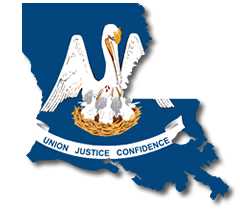
NBS User Testimonials
 Carl Long
Carl Long
NBS Operations Manager
Epidemiology Branch
Arkansas Department of Health
"Arkansas has been using the National Electronic Disease Surveillance System (NEDSS) Base System (NBS) for most of our communicable disease surveillance and reporting since 2009.We have even started using NBS for tracking of non-traditional reportable conditions.Because the application and product support is provided by CDC at no cost, NBS offers a very cost-effective, NEDSS-compliant surveillance system for public health agencies.
The built-in HL7 messaging functionality allows us to send and receive electronic messages by using up-to-date standards. Plus, the Page Builder functionality allows us to easily customize data entry screens to meet our surveillance needs.
We have approximately 375 NBS users.Of this number, about 8–10 are epidemiologists and the rest are public health nurses or clerks. Arkansas has the advantage of having all of the local public health offices as part of the state health department, which makes NBS administration easier because everyone is under the same organizational umbrella."
 Louisiana DHH Infectious Disease Epidemiology Staff
Louisiana DHH Infectious Disease Epidemiology Staff
"Louisiana launched the National Electronic Disease Surveillance System (NEDSS) Base System (NBS) statewide (as Infectious Disease Reporting Information System 2.0 [IDRIS 2.0]) in October 2014. Our deployment of NBS is saving Louisiana approximately $200,000 per year.
Despite having a unique public health infrastructure with nine public health regions, a mostly centralized system, and a majority of reportable diseases reported manually by external facilities into a web-based program, Louisiana has found that NBS functionalities are capable of meeting our state’s workflow and surveillance needs by using a complex setup of permission sets and creative mapping of default laboratory tests.
NBS has enhanced our infectious disease epidemiology (IDEpi) surveillance efforts by:
- reducing variability in the data,
- establishing the flexibility to add new variables on the fly for assessing epidemiologic investigations,
- implementing the HL7 standard CDC Message Mapping Guides (MMGs),
- increasing the timeliness of case notifications to CDC, and
- coordinating electronic data exchange for many other Louisiana Office of Public Health programs (including tuberculosis, STD, HIV, perinatal Hepatitis B, vaccine-preventable diseases, and environmental epidemiology) as one integrated surveillance system.
Louisiana has more than 500 NBS users, with more than 400 external users (including infection preventionists and laboratory personnel) performing lab report data entry and more than 100 internal users in various Louisiana Office of Public Health programs.
NBS is the first web-based application used in Louisiana that contains the functionality to import investigation data from a legacy surveillance system without requiring a technical support contract. IDEpi staff to date have been able to recode, convert, and import into NBS more than 92,000 hepatitis (acute and chronic/past or present) case records by using the Public Health Case Report (PHCR) XML format acceptable to NBS.
Implementation of NBS has given Louisiana greater control over the database and allowed easier exporting of and reporting on infectious disease surveillance data. We have been able to create database views to provide program area epidemiologists data access for analysis and quality control. Data extraction from the database has also facilitated transmission of disease-specific variables to CDC program areas for diseases that currently have no MMG.
Finally, the NBS community has been a great support mechanism since the implementation of NBS. With 22 jurisdictions using NBS, we can share disease-specific investigation pages and general troubleshooting support. Regular conference calls also keep the NBS community connected and allow for sharing ideas on how to improve and advance the system’s capabilities and fully take advantage of existing functionalities."
 Erin Holt Coyne, MPH | Director
Erin Holt Coyne, MPH | Director
Surveillance Systems and Informatics
Tennessee Department of Health
"Tennessee was one of the original beta testers of the National Electronic Disease Surveillance System Base System (NBS) back in 2004. Since then, we have used NBS as our integrated disease surveillance system, supporting surveillance activities for the following:
- general communicable diseases,
- viral hepatitis,
- zoonotic and vector-borne diseases,
- foodborne diseases,
- bioterrorism agents,
- active tuberculosis disease (TB) and TB infection,
- Emerging Infections Program surveillance, and
- carbon monoxide poisoning.
In 2009, Tennessee was faced with finding an alternative surveillance solution for TB due to the retirement of CDC’s Tuberculosis Information Management System (TIMS). We were able to leverage our existing NBS infrastructure to support TB surveillance, minimizing the cost of starting up a new system.
This was our first opportunity to use the new Page Builder functionality in NBS. Page Builder permits users, depending on role-based permissions, to develop and implement new condition-specific pages within NBS in a meta-data driven fashion. It also allows for the production of standardized case notification messages. User-developed pages can be shared among NBS jurisdictions for implementation, further supporting the concept of build once, use many and at no additional implementation cost. Not only has this functionality proven useful for building the pages needed for reportable conditions for Tennessee and the other 21 NBS jurisdictions, it also has proven extremely effective at implementing CDC Case Notification Message Mapping Guides (MMGs) among the jurisdictions.
According to Tennessee’s TB epidemiologist and program manager Jason Cummins, ‘The TB Program Area Module has allowed for an easy, standardized method for collecting TB surveillance data in Tennessee that is able to be viewed by all TB staff across the state. Staff members find data entry and reporting to be more streamlined, and they have had nothing but positive feedback as they transitioned to NBS.’
The migration from TIMS to NBS represents just one of the many cost-saving opportunities we have had with surveillance activities by using NBS. In addition to TB, we were able to leverage NBS for arboviral surveillance, TB infection, and carbon monoxide poisoning. These are situations where we were able to either migrate old systems or implement new surveillance initiatives without contracts or additional funds being spent.
Probably one of the best features of NBS is the NBS User Group (NUG). NUG represents all jurisdictions using NBS and its stakeholders and is a very active collaboration. Over time this group has come together to ensure that beta testing of NBS releases is covered, resolve problems with electronic laboratory result processing and routinely share solutions, provide technical assistance to other jurisdictions, and collaborate on the design of disease-specific pages such as for TB infection. The NUG also identifies user priorities for the system annually and participates in the governance of the application and its future course. Being a part of this user group is invaluable.
Looking forward, Tennessee has high hopes for NBS in supporting additional surveillance integration and electronic case reporting, communicating electronically among NBS jurisdictions, and using decision support for high-volume conditions such as STDs and viral hepatitis."
- Page last reviewed: October 31, 2016
- Page last updated: December 11, 2015
- Content source:



 ShareCompartir
ShareCompartir